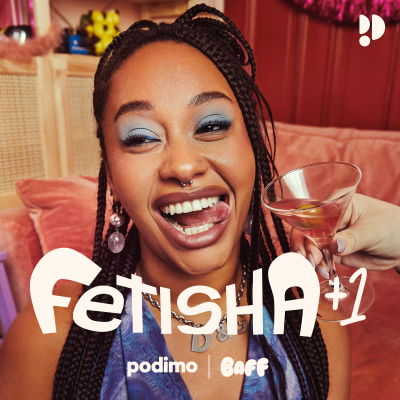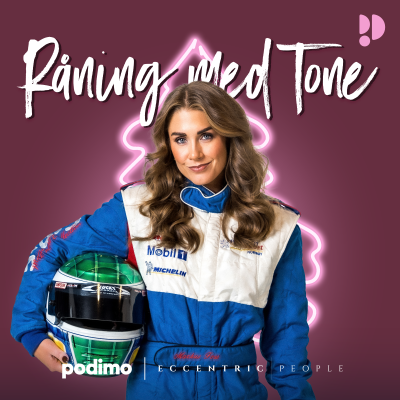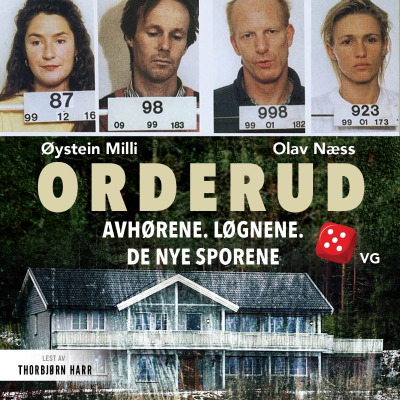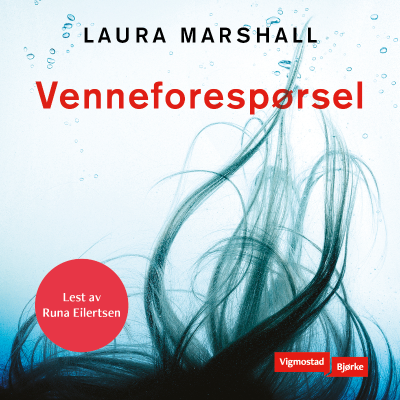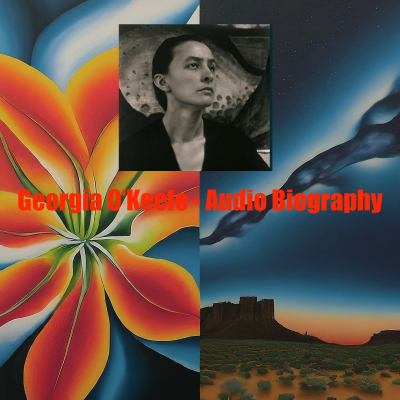
Georgia O'Keefe - Audio Biography
engelsk
Kultur og fritid
Tidsbegrenset tilbud
3 Måneder for 9 kr
Deretter 99 kr / MånedAvslutt når som helst.
- 20 timer lydbøker i måneden
- Eksklusive podkaster
- Gratis podkaster
Les mer Georgia O'Keefe - Audio Biography
Georgia O'Keeffe, one of the most influential and iconic artists of the 20th century, left an indelible mark on the world of art with her unique vision and style. Born on November 15, 1887, in Sun Prairie, Wisconsin, O'Keeffe's journey as an artist was marked by a deep connection to nature, a bold approach to form and color, and a fearless commitment to her artistic vision. Her paintings, which ranged from intimate flower studies to sweeping landscapes of the American Southwest, challenged traditional notions of art and paved the way for generations of artists to come. Early Life and Education Growing up on a farm in Wisconsin, Georgia O'Keeffe developed a deep appreciation for nature at a young age. She was encouraged by her parents to pursue her artistic inclinations and took private art lessons as a child. In 1905, she enrolled at the School of the Art Institute of Chicago, where she studied under John Vanderpoel and learned the techniques of traditional realist painting. After a year in Chicago, O'Keeffe moved to New York City to continue her education at the Art Students League. There, she studied under William Merritt Chase, a renowned impressionist painter, and was introduced to the latest developments in European modernism. However, O'Keeffe found herself increasingly dissatisfied with the traditional approach to art education and began to seek out new ways of expressing her artistic vision. In 1912, O'Keeffe attended a summer art school in Virginia, where she was introduced to the ideas of Arthur Wesley Dow, a influential art educator who emphasized the importance of personal expression and design in art. Dow's teachings had a profound impact on O'Keeffe, and she began to experiment with abstraction and simplification in her work. Breakthrough and Recognition O'Keeffe's artistic breakthrough came in 1915 when she created a series of abstract charcoal drawings that caught the attention of Alfred Stieglitz, a prominent photographer and art dealer in New York City. Stieglitz was impressed by the originality and power of O'Keeffe's work and offered to exhibit her drawings at his gallery, 291. The exhibition, which opened in 1916, was a critical and commercial success and established O'Keeffe as a rising star in the art world. Stieglitz became O'Keeffe's champion and mentor, and the two developed a close personal and professional relationship that would last for decades. In the years that followed, O'Keeffe continued to develop her unique style, which combined elements of abstraction, symbolism, and realism. She became known for her paintings of flowers, which she often depicted in close-ups, filling the canvas with their sensuous forms and colors. These paintings, which included works like "Black Iris" (1926) and "Oriental Poppies" (1928), were seen as bold and daring and challenged traditional notions of femininity and sexuality in art. The New Mexico Years In 1929, O'Keeffe made her first trip to New Mexico, a place that would become a major source of inspiration for her work. She was immediately drawn to the stark, rugged beauty of the landscape, with its vast expanses of desert, towering mesas, and endless sky. Over the next two decades, O'Keeffe would spend increasing amounts of time in New Mexico, eventually making it her permanent home in 1949. During this period, O'Keeffe's art underwent a significant transformation. She began to focus more on the landscape, capturing the essence of the Southwest in her paintings. Works like "Red Hills and Bones" (1941) and "Pelvis with Blue" (1944) depicted the stark, sun-bleached bones and rocks of the desert, while paintings like "Black Place III" (1944) and "Sky Above Clouds IV" (1965) captured the vastness and mystery of the New Mexico sky. O'Keeffe's New Mexico paintings were a revelation and established her as one of the most important artists of her generation. They were seen as a powerful expression of the American spirit and helped to define the cultural identity of the Southwest. Legacy and Influence Throughout her long and prolific career, Georgia O'Keeffe remained committed to her artistic vision, never compromising her integrity or bowing to the demands of the art market. She was a trailblazer and a rebel, who challenged the status quo and paved the way for generations of women artists to come. O'Keeffe's influence can be seen in the work of countless artists who followed in her footsteps, from the abstract expressionists of the 1950s to the feminist artists of the 1970s and beyond. Her paintings continue to inspire and captivate audiences around the world, and her legacy as one of the greatest American artists of the 20th century is secure. In addition to her artistic achievements, O'Keeffe was also a cultural icon and a symbol of independence and individuality. She lived life on her own terms, defying conventions and expectations at every turn. Her personal style, which often included black and white clothing and a distinctive hat, became as famous as her art and helped to establish her as a fashion icon as well. O'Keeffe's legacy extends beyond the art world as well. She was a passionate advocate for the environment and a lover of the natural world, and her paintings helped to raise awareness about the beauty and fragility of the American landscape. Today, her former home and studio in Abiquiu, New Mexico, is a national historic landmark and a popular destination for art lovers and nature enthusiasts alike. Exhibitions and Collections Throughout her career, Georgia O'Keeffe's work was exhibited widely in the United States and abroad. Her first solo exhibition was held at Alfred Stieglitz's Gallery, 291, in 1917, and she continued to exhibit regularly at major museums and galleries throughout her life. In 1946, the Museum of Modern Art in New York City held a retrospective exhibition of O'Keeffe's work, which was the first retrospective of a woman artist ever held at the museum. The exhibition was a critical and popular success and helped to cement O'Keeffe's reputation as one of the most important artists of her generation. Today, O'Keeffe's work is held in major collections around the world, including the Metropolitan Museum of Art in New York, the Art Institute of Chicago, and the Georgia O'Keeffe Museum in Santa Fe, New Mexico. The Georgia O'Keeffe Museum, which opened in 1997, is the largest single repository of O'Keeffe's work in the world and is dedicated to preserving and promoting her legacy. Quotes and Insights Throughout her life, Georgia O'Keeffe was known for her wit, intelligence, and sharp insights into the nature of art and creativity. Here are a few of her most famous quotes: "I found I could say things with color and shapes that I couldn't say any other way - things I had no words for." "I've been absolutely terrified every moment of my life - and I've never let it keep me from doing a single thing I wanted to do." "I hate flowers - I paint them because they're cheaper than models and they don't move." "Nobody sees a flower really; it is so small. We haven't time, and to see takes time - like to have a friend takes time." "I decided that if I could paint that flower in a huge scale, you could not ignore its beauty." These quotes offer a glimpse into O'Keeffe's unique perspective on art and life and reveal the depth of her commitment to her artistic vision. Conclusion Georgia O'Keeffe was a true visionary, whose art and life continue to inspire and influence people around the world. Her paintings, with their bold colors, sensuous forms, and powerful symbolism, capture the essence of the American spirit and the beauty of the natural world. O'Keeffe's legacy extends far beyond her artistic achievements, however. She was a trailblazer and a rebel, who challenged the status quo and paved the way for generations of women artists to come. She lived life on her own terms, defying conventions and expectations at every turn, and became a cultural icon and a symbol of independence and individuality. Today, more than three decades after her death in 1986, Georgia O'Keeffe remains one of the most beloved and influential artists in American history. Her work continues to be exhibited and celebrated around the world, and her legacy as a pioneer and a visionary is secure. As we look to the future, it is clear that O'Keeffe's impact on the world of art and culture will continue to be felt for generations to come. Her paintings will always be a source of inspiration and wonder, and her life will always be a testament to the power of creativity, individuality, and the human spirit. Thanks for listening to Quiet Please. Remember to like and share wherever you get your podcasts.
Alle episoder
1 EpisoderGeorgia O'Keefe - Audio Biography
Georgia O'Keeffe, one of the most influential and iconic artists of the 20th century, left an indelible mark on the world of art with her unique vision and style. Born on November 15, 1887, in Sun Prairie, Wisconsin, O'Keeffe's journey as an artist was marked by a deep connection to nature, a bold approach to form and color, and a fearless commitment to her artistic vision. Her paintings, which ranged from intimate flower studies to sweeping landscapes of the American Southwest, challenged traditional notions of art and paved the way for generations of artists to come. Early Life and Education Growing up on a farm in Wisconsin, Georgia O'Keeffe developed a deep appreciation for nature at a young age. She was encouraged by her parents to pursue her artistic inclinations and took private art lessons as a child. In 1905, she enrolled at the School of the Art Institute of Chicago, where she studied under John Vanderpoel and learned the techniques of traditional realist painting. After a year in Chicago, O'Keeffe moved to New York City to continue her education at the Art Students League. There, she studied under William Merritt Chase, a renowned impressionist painter, and was introduced to the latest developments in European modernism. However, O'Keeffe found herself increasingly dissatisfied with the traditional approach to art education and began to seek out new ways of expressing her artistic vision. In 1912, O'Keeffe attended a summer art school in Virginia, where she was introduced to the ideas of Arthur Wesley Dow, a influential art educator who emphasized the importance of personal expression and design in art. Dow's teachings had a profound impact on O'Keeffe, and she began to experiment with abstraction and simplification in her work. Breakthrough and Recognition O'Keeffe's artistic breakthrough came in 1915 when she created a series of abstract charcoal drawings that caught the attention of Alfred Stieglitz, a prominent photographer and art dealer in New York City. Stieglitz was impressed by the originality and power of O'Keeffe's work and offered to exhibit her drawings at his gallery, 291. The exhibition, which opened in 1916, was a critical and commercial success and established O'Keeffe as a rising star in the art world. Stieglitz became O'Keeffe's champion and mentor, and the two developed a close personal and professional relationship that would last for decades. In the years that followed, O'Keeffe continued to develop her unique style, which combined elements of abstraction, symbolism, and realism. She became known for her paintings of flowers, which she often depicted in close-ups, filling the canvas with their sensuous forms and colors. These paintings, which included works like "Black Iris" (1926) and "Oriental Poppies" (1928), were seen as bold and daring and challenged traditional notions of femininity and sexuality in art. The New Mexico Years In 1929, O'Keeffe made her first trip to New Mexico, a place that would become a major source of inspiration for her work. She was immediately drawn to the stark, rugged beauty of the landscape, with its vast expanses of desert, towering mesas, and endless sky. Over the next two decades, O'Keeffe would spend increasing amounts of time in New Mexico, eventually making it her permanent home in 1949. During this period, O'Keeffe's art underwent a significant transformation. She began to focus more on the landscape, capturing the essence of the Southwest in her paintings. Works like "Red Hills and Bones" (1941) and "Pelvis with Blue" (1944) depicted the stark, sun-bleached bones and rocks of the desert, while paintings like "Black Place III" (1944) and "Sky Above Clouds IV" (1965) captured the vastness and mystery of the New Mexico sky. O'Keeffe's New Mexico paintings were a revelation and established her as one of the most important artists of her generation. They were seen as a powerful expression of the American spirit and helped to define the cultural identity of the Southwest. Legacy and Influence Throughout her long and prolific career, Georgia O'Keeffe remained committed to her artistic vision, never compromising her integrity or bowing to the demands of the art market. She was a trailblazer and a rebel, who challenged the status quo and paved the way for generations of women artists to come. O'Keeffe's influence can be seen in the work of countless artists who followed in her footsteps, from the abstract expressionists of the 1950s to the feminist artists of the 1970s and beyond. Her paintings continue to inspire and captivate audiences around the world, and her legacy as one of the greatest American artists of the 20th century is secure. In addition to her artistic achievements, O'Keeffe was also a cultural icon and a symbol of independence and individuality. She lived life on her own terms, defying conventions and expectations at every turn. Her personal style, which often included black and white clothing and a distinctive hat, became as famous as her art and helped to establish her as a fashion icon as well. O'Keeffe's legacy extends beyond the art world as well. She was a passionate advocate for the environment and a lover of the natural world, and her paintings helped to raise awareness about the beauty and fragility of the American landscape. Today, her former home and studio in Abiquiu, New Mexico, is a national historic landmark and a popular destination for art lovers and nature enthusiasts alike. Exhibitions and Collections Throughout her career, Georgia O'Keeffe's work was exhibited widely in the United States and abroad. Her first solo exhibition was held at Alfred Stieglitz's Gallery, 291, in 1917, and she continued to exhibit regularly at major museums and galleries throughout her life. In 1946, the Museum of Modern Art in New York City held a retrospective exhibition of O'Keeffe's work, which was the first retrospective of a woman artist ever held at the museum. The exhibition was a critical and popular success and helped to cement O'Keeffe's reputation as one of the most important artists of her generation. Today, O'Keeffe's work is held in major collections around the world, including the Metropolitan Museum of Art in New York, the Art Institute of Chicago, and the Georgia O'Keeffe Museum in Santa Fe, New Mexico. The Georgia O'Keeffe Museum, which opened in 1997, is the largest single repository of O'Keeffe's work in the world and is dedicated to preserving and promoting her legacy. Quotes and Insights Throughout her life, Georgia O'Keeffe was known for her wit, intelligence, and sharp insights into the nature of art and creativity. Here are a few of her most famous quotes: "I found I could say things with color and shapes that I couldn't say any other way - things I had no words for." "I've been absolutely terrified every moment of my life - and I've never let it keep me from doing a single thing I wanted to do." "I hate flowers - I paint them because they're cheaper than models and they don't move." "Nobody sees a flower really; it is so small. We haven't time, and to see takes time - like to have a friend takes time." "I decided that if I could paint that flower in a huge scale, you could not ignore its beauty." These quotes offer a glimpse into O'Keeffe's unique perspective on art and life and reveal the depth of her commitment to her artistic vision. Conclusion Georgia O'Keeffe was a true visionary, whose art and life continue to inspire and influence people around the world. Her paintings, with their bold colors, sensuous forms, and powerful symbolism, capture the essence of the American spirit and the beauty of the natural world. O'Keeffe's legacy extends far beyond her artistic achievements, however. She was a trailblazer and a rebel, who challenged the status quo and paved the way for generations of women artists to come. She lived life on her own terms, defying conventions and expectations at every turn, and became a cultural icon and a symbol of independence and individuality. Today, more than three decades after her death in 1986, Georgia O'Keeffe remains one of the most beloved and influential artists in American history. Her work continues to be exhibited and celebrated around the world, and her legacy as a pioneer and a visionary is secure. As we look to the future, it is clear that O'Keeffe's impact on the world of art and culture will continue to be felt for generations to come. Her paintings will always be a source of inspiration and wonder, and her life will always be a testament to the power of creativity, individuality, and the human spirit. Thanks for listening to Quiet Please. Remember to like and share wherever you get your podcasts.
Velg abonnementet ditt
Tidsbegrenset tilbud
Premium
20 timer lydbøker
Eksklusive podkaster
Gratis podkaster
Avslutt når som helst
3 Måneder for 9 kr
Deretter 99 kr / Måned
Premium Plus
100 timer lydbøker
Eksklusive podkaster
Gratis podkaster
Avslutt når som helst
Prøv gratis i 14 dager
Deretter 169 kr / måned
3 Måneder for 9 kr. Deretter 99 kr / Måned. Avslutt når som helst.


